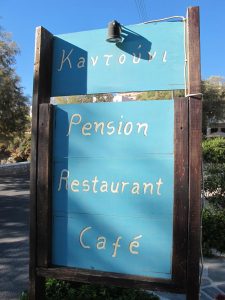
by Paul Donnelly
Archaeologist, and Decorative Arts Curator, Powerhouse Museum
Furniture numbers among the items I help to look after in my role as curator at the Museum of Applied Arts & Sciences (Powerhouse Museum) in Sydney, and inevitably my eye was drawn to the characterful wooden chairs on Andros.
The Café Kantouni where the team are staying beckons passers-by with its attractive outside dining space, typical of a Greek island pensione.
It is an extensive space with simple but well-made furniture under large shady trees supported on white-painted trunks and white-washed textured walls that morph into inbuilt benches upon which sit geraniums, thriving (seemingly against the odds) in tight terracotta pots or olive oil can containers. And joining it all together is slate paving outlined in white.
I was especially impressed by the various dining chairs which, while of recent manufacture, come from a much older vernacular (local) hand-made tradition and style that fits into a broader European rural tradition dating back to the 19th century. Despite the availability of cheaper imported (plastic) furniture in Greece, here we see an appropriate style continuing to be valued in recognition of appropriateness to context. The chairs are of a traditional ‘ladder back’ dining-chair form with the high back extending from the rear legs which taper in towards the ground. The legs can be square or round in section with the front set at a wider stance than the rear and the seat is of raffia woven to form an X shape pattern within the seat. The top slat on the back of each chair has a decorative hole cut-out that can be large enough to act as a handle depending on its shape and size which includes hearts and triple leaf.
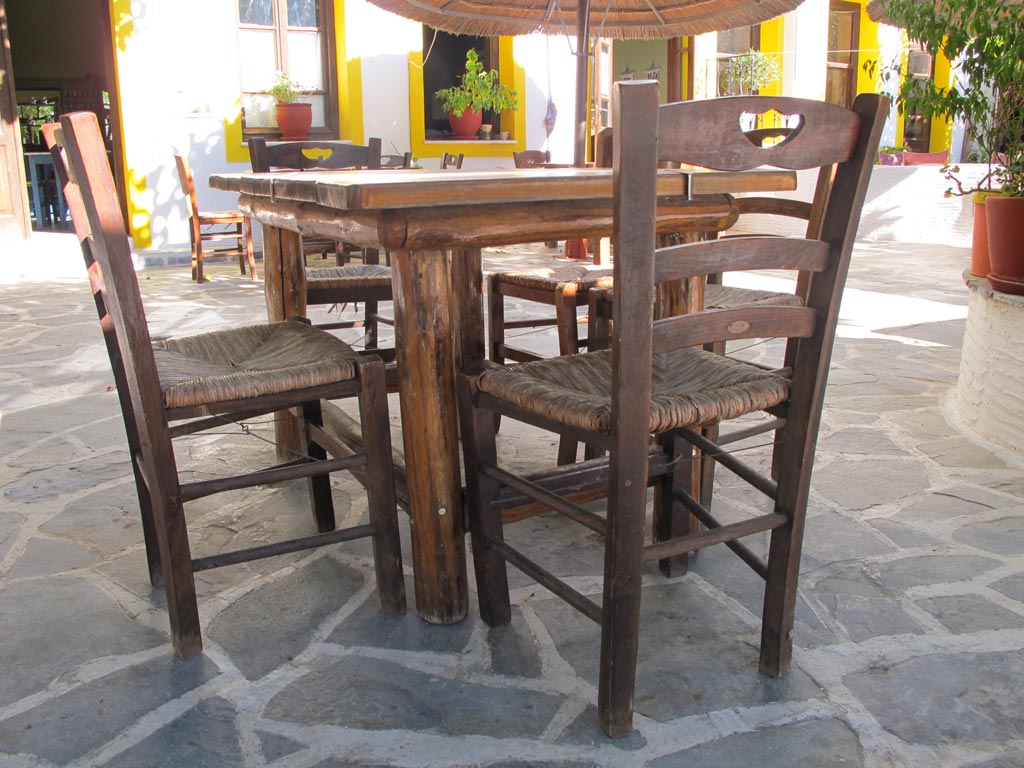
A variant consists of a single large slat forming the back with the cut-out in the centre. They have the delightful character of an Alice in Wonderland set combined with, as other team members have pointed out, the chairs of Vincent Van Gogh. No doubt this association is largely fuelled by the woven seat. Soft and comfy, it drains the water from a shower quickly, and its comfort is borne out by the numerous sleeping cats that emerge with a chair pulled from the table!
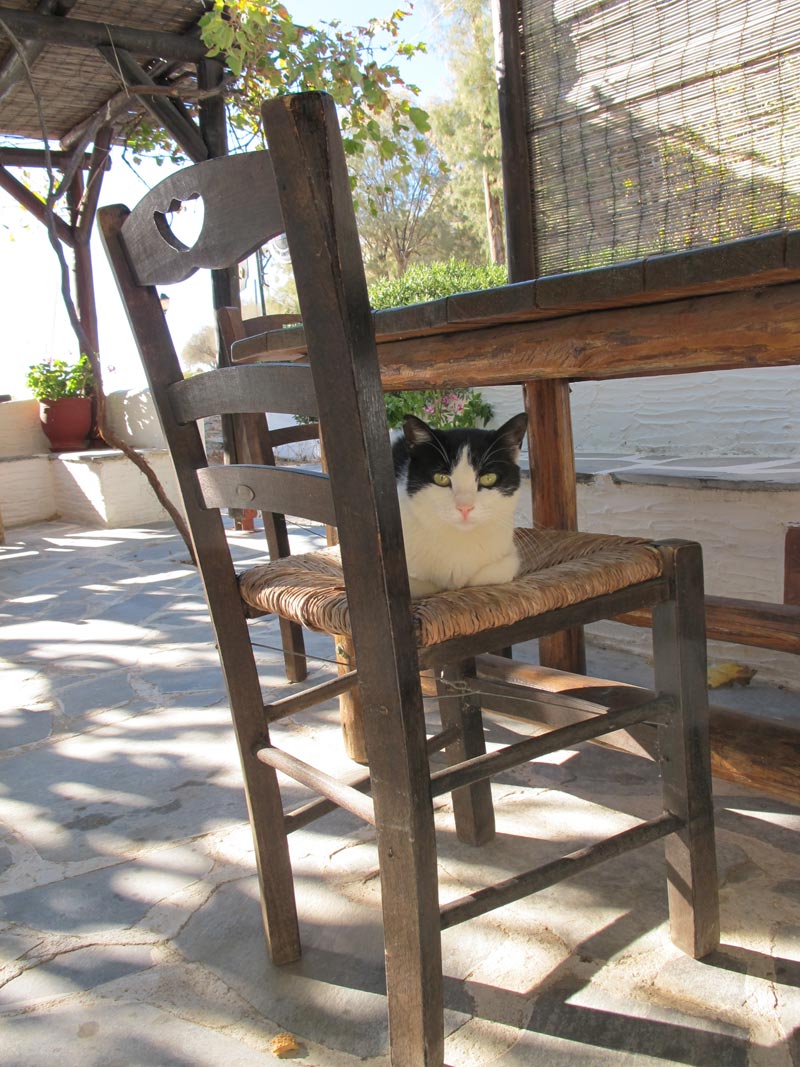
A distinctive feature that seems at odds with the nature materials of the chair is the use of thin galvanised wire under the seat. It is attached at mid-height through drilled holes in each leg and where it crosses over at the centre the wire is twisted to pull the legs inwards and keep the joints in tension. This method makes them tremendously strong and not a single chair rocked in any way at Kafe Kantouni! The chairs blend well with the honest and very practical Greek style that somehow make passage of time and utility incredibly comfortable and appear appropriate. The endurance of classical designs like these calls to mind the typical café chair in Paris, where the odd café which strays from this formula seems never as full with customers!
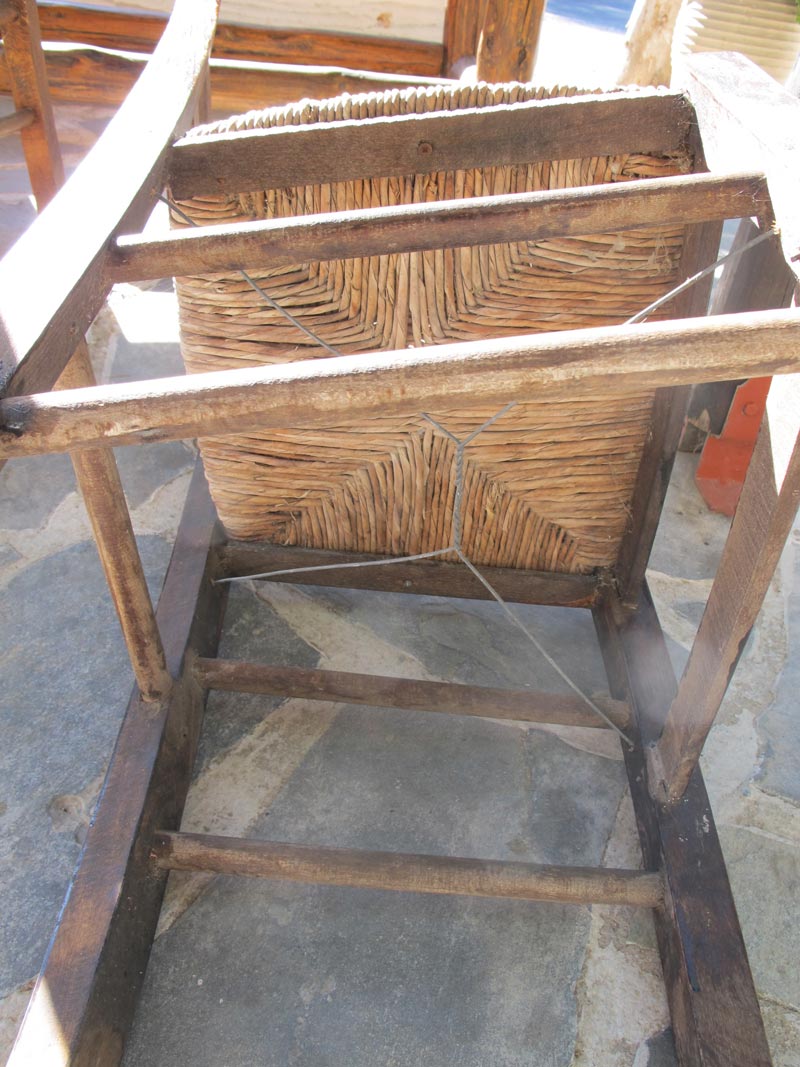
In the collection of the Museum of Applied Arts & Sciences are a couple of celebrated modern chairs whose designs are based upon the unpretentious and efficient qualities of vernacular furniture. In 1959 Vico Magistretti designed the Carimate dining chair based upon the traditional Italian country chair, and even more famous is the fabulous ‘Superleggera’ (super lightweight) designed by Gio Ponti in 1957 and inspired by the chairs of the Italian village of Chiavari. As the name suggests, Ponti’s chair is most famous for being incredibly light, a feature due to efficient use of wood, and tightly woven cane seat. A famous test involved its survival after falling from a four-story apartment window and bouncing like a ball . . . but I don’t think Giorgos at the Kafe Kantouni would appreciate us repeating this experiment with his chairs!
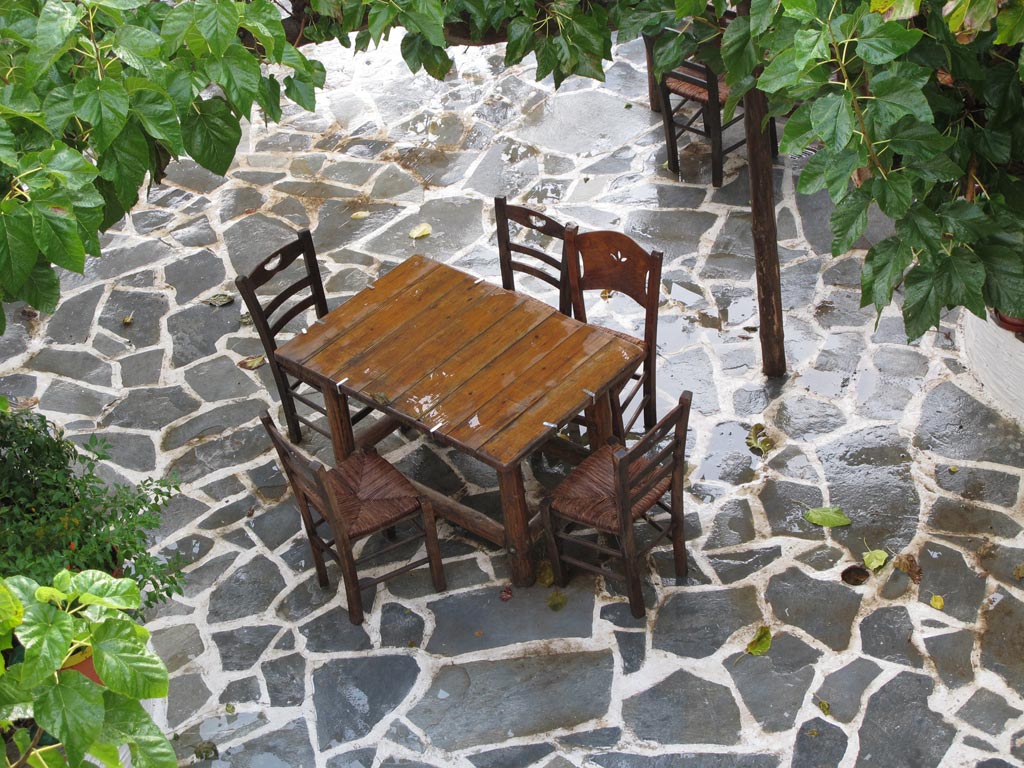


2 thoughts on “Greek chairs at the Café Kantouni”
You archaeologists certainly have an eye for detail ! Plastic chairs in a taverna just look awful. We ate in the Kantouni several times, the setting & surroundings make a meal far more enjoyable.
Thanks, Robert – we couldn’t agree more. And the hospitality of our Kantouni hosts, Giorgos and Alexandra, make it all the more special.